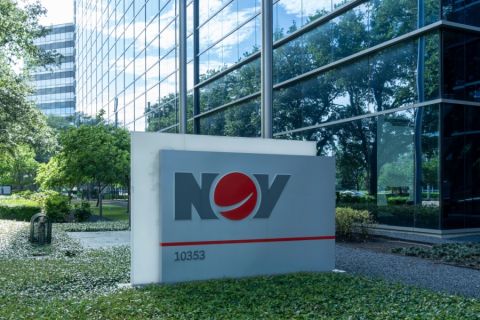When Halliburton first introduced its RapidShift stimulation and production sleeve system, horizontal drilling was just beginning to become popular in unconventional resource plays, and these plays were being evaluated as potential sources of future energy production. Because traditional completion methods were not well-suited for these new trends, Halliburton wanted to develop a more effective and efficient method to complete horizontal wellbores.
“This would give exploration and operating companies new options for completion designs to tackle these emerging challenges,” said Benjamin Wellhoefer, global product champion for Halliburton Horizontal Completions.
The RapidShift system, which allows selective multizone stimulation treatment, can be operated either by using a hydromechanical shifting tool run on coiled tubing or jointed tubing or using a ball-drop system. In 2009 the RapidShift system (called Delta Stim at the time) won the completions category of Hart Energy’s Meritorious Awards for Engineering Innovation.
The system has proven successful since its introduction. “Processes improved along the way to make the system even more reliable as Halliburton continuously implemented lessons learned and refined through R&D to improve the effectiveness of its horizontal completion offerings,” Wellhoefer said.
Recently, with only mechanically shifted fracturing sleeves, the system has been used in North American shale plays to provide enhanced efficiency and flexibility. The system’s mechanically shifted sleeves can provide an unlimited number of fracturing points and are cemented as an integral part of the production casing string.
The system also has been installed for use in offshore operations in the North Sea. The ball-drop-activated version of the system decreases completion cycle time, which can allow offshore wells to be brought onto production sometimes months ahead of schedule.
Several key upgrades have been made to the system in the last four years, including the ability to provide additional fracturing stages in a single wellbore with the ball-drop version, new wiper dart systems to enhance the wiping efficiency when cementing RapidShift systems in place in a wellbore, and enhanced internal seal design and revised tool designs to increase reliability and remove risk. The company also has developed methods to obtain a surface pressure signal to ensure that the target sleeve has opened and fracturing is occurring in the target interval.
“Remote ball-launching systems have been added to remove personnel from the red zone and improve safety,” Wellhoefer said. “Additional sizes and temperature and pressure ratings have been developed to handle hostile well environment and HP/HT applications. A new HP/HT fracturing ball system was just recently released to accompany these new fracturing sleeve options.”
Key R&D projects involve self-removing fracturing balls and ball seats, increasing the available fracturing stages through enhanced sleeve designs, and increasing the wiping efficiency of cemented fracturing sleeve completion systems.
“We will continue to develop economical yet cutting-edge technology for deployment in unconventional reservoirs, finding ways to enhance production through better, more effective, and economical fracturing sleeve completion designs,” Wellhoefer said.
Recommended Reading
NOV Announces $1B Repurchase Program, Ups Dividend
2024-04-26 - NOV expects to increase its quarterly cash dividend on its common stock by 50% to $0.075 per share from $0.05 per share.
Repsol to Drop Marcellus Rig in June
2024-04-26 - Spain’s Repsol plans to drop its Marcellus Shale rig in June and reduce capex in the play due to the current U.S. gas price environment, CEO Josu Jon Imaz told analysts during a quarterly webcast.
US Drillers Cut Most Oil Rigs in a Week Since November
2024-04-26 - The number of oil rigs fell by five to 506 this week, while gas rigs fell by one to 105, their lowest since December 2021.
CNX, Appalachia Peers Defer Completions as NatGas Prices Languish
2024-04-25 - Henry Hub blues: CNX Resources and other Appalachia producers are slashing production and deferring well completions as natural gas spot prices hover near record lows.
Chevron’s Tengiz Oil Field Operations Start Up in Kazakhstan
2024-04-25 - The final phase of Chevron’s project will produce about 260,000 bbl/d.




